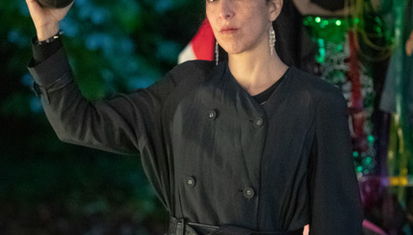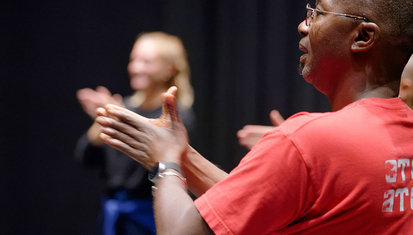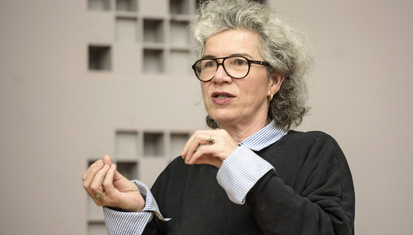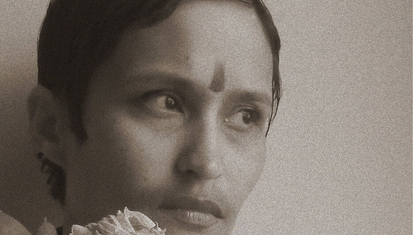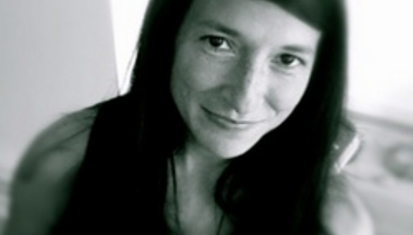It’s no secret that artistic research takes place at the Academy of Theatre and Dance, but what does it actually involve? In this sixth episode in a series of interviews, we take a peek behind the scenes, in conversation with visual artist and curator Miguel E. Keerveld, a member of the THIRD research group at DAS Graduate School.
Part 6: I walk with you, you walk with I
When I meet up with Miguel E. Keerveld on Zoom, he is in Paramaribo, the capital of Suriname. He has just welcomed a group of children to the city’s Readytex Art Gallery, the largest privately owned gallery in the Caribbean. Keerveld, a curator at the gallery this year, describes himself as an intuitive artist and an autodidact – he originally trained as a civil technical engineer.
Miguel: I was appointed as curator here before I joined THIRD – they were looking for someone local. They had already been running Alakondre here for three years, a project through which Surinamese artists reflect on their identity, both in a personal context and in the broader context of Suriname. It’s a quest to identify a shared concept, to define Surinamese art and bring it to the outside world.
What does ‘Alakondre’ mean?
Alakondre is a typically Surinamese concept. Literally, it means ‘all countries, all denominations, all colours’. The population of Suriname is exceptionally diverse: our shared language, Sranan, is made up of 22 local languages. You could say Alakondre is the opposite of Apartheid; our true nature is inclusive.
The Alakondre project was originally led by Alida Neslo, the theatre practitioner and former director of DasArts [the forerunner of DAS Theatre]. Along the way it turned out that many Surinamese artists have difficulty expressing themselves verbally. If you ask an American artist to talk about their work they’re unstoppable, but here you have to drag it out of them. I was asked to continue Alakondre and work with the 18 artists at the gallery to add new layers of meaning.
How did you go about it?
In recent years I’ve been training as a coach/counsellor. In the past I’ve explored the connection between counselling and art with young people with HIV, or at children’s homes and boarding schools – these are often students who come from inland to study in the city – and community organisations too. I did that through MISSION 21, Hand in Hand into Active Participation, a project which was really good at helping young people develop self-confidence. Now, at the gallery and THIRD, I’m looking specifically into whether it’s a workable idea to connect counselling with curatorship. If you’re working in Europe it makes sense as a curator to have a background in art history, but in my experience that won’t get you far in Suriname. Our society is far more emotional, and I think my approach is more relevant here at the moment.
How do you approach your role as curator?
I take an unforced approach in my work, which people seem to like. This coming April the artists from the gallery will be presenting new work at the Atlantic World Art Fair. I asked if they would involve ‘an other’ in their creative process. That meant entering into a symbolic dialogue with ‘an other’. It could be a grandparent, neighbour, your inner child or someone from a different ethnicity, or it could be something abstract. It’s crucial here that it’s about ‘an other’ and not ‘the other’. ‘The other’ is a western model that establishes a distance that we’re not familiar with here in Suriname. Here we say: I see you in me, you see me in you.
I devised the phrase I kroywara I (I walk with you, you walk with I) and took it as the departure point for my explorations in the gallery and at THIRD. You’ll find parallels in phrases such as Umuntu Ngumntu Ngbantu in South Africa and In Lak’ech Ala K’in in Mayan. My grandfather was half-indigenous and a shaman. I was raised Christian, but I crave the knowledge I can explore together with him. I’m convinced that his knowledge is within me too.
Is your grandfather your ‘other’ in this project?
Yes, but my grandmother is part of it as well. I grew up in Paramaribo, and in the holidays we’d often go to Dageraad, the former cocoa plantation where my grandmother lived. It was there that my little sister and I experienced what it was like to run a smallholding of farmland. First an area of forest would be cleared – the men would do that – then the whole community would burn the wood on big bonfires. Then the land would be shared out among several families. Then each family – the women and children – would make smaller fires of any remaining wood that hadn’t been sufficiently burned. I remember how my grandmother did this with my mother and us before planting could begin, and then later there was the harvest.
This second burning, or ‘small preparation’ is called koiwara. Koiwara made the soil extra fertile. And it’s because I’m keen to work using my feminine aspect that I chose koiwara as my personal symbol for this process at the gallery and THIRD. What koiwara is about for me is the – to my mind anyway – fascinating relationship between mother and child. It also reminds me of ancestral strength, in relation to my grandparents. I get lots of energy from this project, but it’s very demanding too. My grandparents are guiding me through this process.
It sounds like you’re running a graduate school at the gallery all by yourself!
[Laughs] No, not at all, I’m far from alone. There are two artists from the same generation as me: Kurt Nahar and Sri Irodikromo. They’re my brainstorming partners and co-curators. And my artistic mentors are Alida Neslo and Rinaldo Klas, who are two generations older than me. They reel me in if I ever go too far.
Interview by Hester van Hasselt

